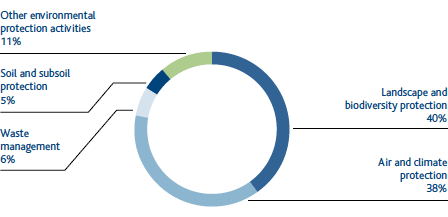Protecting local areas

Safeguarding the environment is an integral part of corporate policy and investment decisions for all Snam’s activities, and the Company is fully committed to an approach in which the environment and economic development can exist side by side, without neglecting the protection of local areas.
Snam adopts specific certified management systems for environmental matters to oversee corporate processes and activities. In 2013, Snam Rete Gas extended certification of its environmental management system in accordance with ISO 14001 to the entire company. As a result, all of Snam’s operating companies are now certified in accordance with this standard.
The key themes at global level, and the nature of Snam’s operations, have caused the Company to focus on two main challenges: combating climate change and reducing energy consumption, and safeguarding nature and biodiversity.
This commitment, which has been formalised in the Group policy issued in February 2012, has been applied in a whole range of environments: promoting sustainable use of natural resources; preventing pollution and protecting ecosystems and biodiversity; implementing operating and management actions to reduce greenhouse gas emissions, with an approach that aims to mitigate climate change; and managing waste to reduce production and promote recovery at its final destination.
The responsibility for implementing the policy is shared by Snam’s HSEQ department, which focuses on the functions of coordination and general guidance for the entire Group, and the HSEQ structures in the individual companies that have the tasks of specific guidance, coordination and support for the relative operating units.
Snam has infrastructure in every region of Italy, in areas and communities with different values and traditions as well as different economic, social and environmental conditions.
In this context, Snam’s policy is to build new infrastructure, adopting a rigorous, transparent and cooperative approach to ensure that establishments are environmentally compatible and to encourage their acceptance by stakeholders. Snam’s priority is its relations with central and local government. In 2013, in the transportation segment, meetings were held with 61 union representatives to present the projects already achieved and 15 meetings took place with farming associations.
In 2013, environmental expenses amounted to approximately 166.6 million (141 million for investments and 25.6 million for management costs).
Around 808,000 has been spent on donations, sponsorships and local initiatives, excluding environmental compensation. GRI - G4 : EC7
ENVIRONMENTAL EXPENSES SUBDIVIDED BY TYPE GRI - G4: EN31
